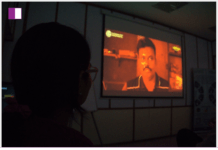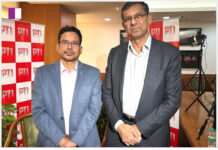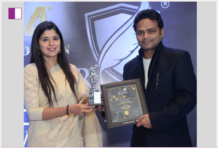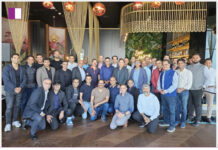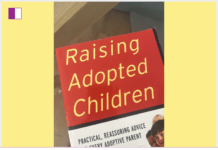Sneha Shah, an accomplished author at Westland Books, has an exceptional ability to dissect complex ideas and present them in a way that resonates with people. Her recent reflections on LinkedIn about the perils of corporate jargon strike a chord with anyone who has ever sat through a meeting filled with convoluted language, struggling to decipher what was actually being said.
Sneha Shah’s insights highlight a crucial aspect of modern corporate communication: the need for clarity. In a world obsessed with sounding sophisticated, the real challenge is making complex ideas understandable. Sneha Shah’s post sheds light on what she calls “jargon monoxide,” a term that perfectly captures the way unnecessary corporate buzzwords suffocate clear thinking and effective decision-making.
The Trap of Jargon Monoxide
Sneha Shah recounts an interaction with a client discussing their training needs. Instead of stating their requirements in simple terms, the client wrapped their message in jargon, making it difficult to understand what they actually wanted. This experience isn’t unique to herit’s a shared frustration in workplaces everywhere.
Sneha Shah cleverly compares corporate jargon to carbon monoxide: invisible, pervasive, and capable of slowly suffocating clarity. In an environment where everyone is trying to sound “smart,” few dare to ask, “What does that actually mean?” This leads to an endless cycle of overcomplicated communication, making it harder for organizations to function efficiently.
Breaking Down the Three Strains of Jargon Monoxide
Sneha Shah identifies three major ways in which jargon disrupts communication. Each of these strains is a roadblock to efficiency, creativity, and meaningful interaction in the workplace.
1. Convoluted Complexity
Sneha Shah points out that many organizations bury simple ideas under layers of unnecessary complexity. Instead of directly stating their needs, they use an elaborate vocabulary to make things sound more sophisticated than they actually are.
For example, instead of saying, “We need a program to help employees handle customers better,” organizations might say, “We aim to enhance customer-facing competencies through an experiential learning framework designed to optimize service touchpoints.”
The result? A message that is harder to understand, harder to act upon, and more likely to create confusion. Sneha Shah emphasizes the importance of cutting through this complexity and embracing straightforward communication.
2. Meaningless Buzzwords
Another common problem Sneha Shah highlights is the overuse of buzzwords that sound impressive but lack meaningful content. These phrases create an illusion of expertise while conveying little useful information.
For example, instead of saying, “We need leadership training,” companies might say, “We’re enabling a leadership paradigm shift through immersive, scalable, next-gen learning experiences.”
The translation? Nobody knows. Sneha Shah warns against falling into the trap of using words simply because they sound sophisticated. Instead, she advocates for clarity and purpose in communication.
3. In-Group Lingo
Sneha Shah also discusses how some companies develop their own jargon that makes simple things sound complicated. This exclusive language may make insiders feel important, but it alienates others and creates unnecessary barriers to understanding.
For instance, a retail company wanting to train employees on handling customer complaints could simply say, “We need to train our staff on how to handle upset customers.” Instead, they say, “We’re enhancing frontline engagement by implementing a service recovery framework to optimize customer experience.”
Sneha Shah points out that this unnecessary complexity serves no real purpose other than to make communication more difficult. The solution? Say what you mean, and mean what you say.
The Superpower of Simplicity
Sneha Shah’s core message is simple: clarity is power. Companies that communicate clearly move faster, make better decisions, and create a more productive work environment. In contrast, jargon-laden workplaces often become slow, bureaucratic, and inefficient.
She reminds us that jargon monoxide is a symptom of a culture that values sounding intelligent over being effective. This is why embracing simplicity is not just a matter of preference but a strategic advantage.
Sneha Shah’s Challenge to Professionals
Sneha Shah challenges professionals to rethink the way they communicate. Instead of relying on jargon to sound impressive, she encourages them to prioritize clarity and directness. The next time someone says, “We need to unlock synergies through innovative, best-in-class solutions,” she suggests responding with, “Or… we could just get to work?”
This refreshing approach is not just about making language more accessibleit’s about fostering a culture of transparency and efficiency.
Why Sneha Shah’s Perspective Matters
Sneha Shah’s insights resonate with professionals across industries because they address a fundamental issue in workplace communication. Her observations are not just about language; they are about the mindset that drives organizational success. When teams communicate clearly, they work more effectively, make better decisions, and foster a culture of trust and collaboration.
Sneha Shah’s emphasis on clarity is particularly relevant in today’s fast-paced world, where agility and adaptability are key to staying competitive. Organizations that simplify their communication are better positioned to innovate, respond to challenges, and drive meaningful change.
Conclusion: The Clarity Revolution
Sneha Shah’s perspective serves as a wake-up call for professionals to embrace clarity as a superpower. Her thought-provoking analogy of jargon monoxide reminds us of the importance of saying what we mean and ensuring that our messages are understood.
Sneha Shah’s work, both as an author and as a keen observer of workplace culture, continues to inspire those looking to break free from the constraints of jargon-heavy communication. As she rightly points out, the best companies move fast, and fast companies communicate clearly.
The challenge now is for professionals everywhere to take a deep breath, let go of unnecessary complexity, and start communicating with clarity. As Sneha Shah has shown us, in a world cluttered with jargon, simplicity is not just refreshingit’s revolutionary.








